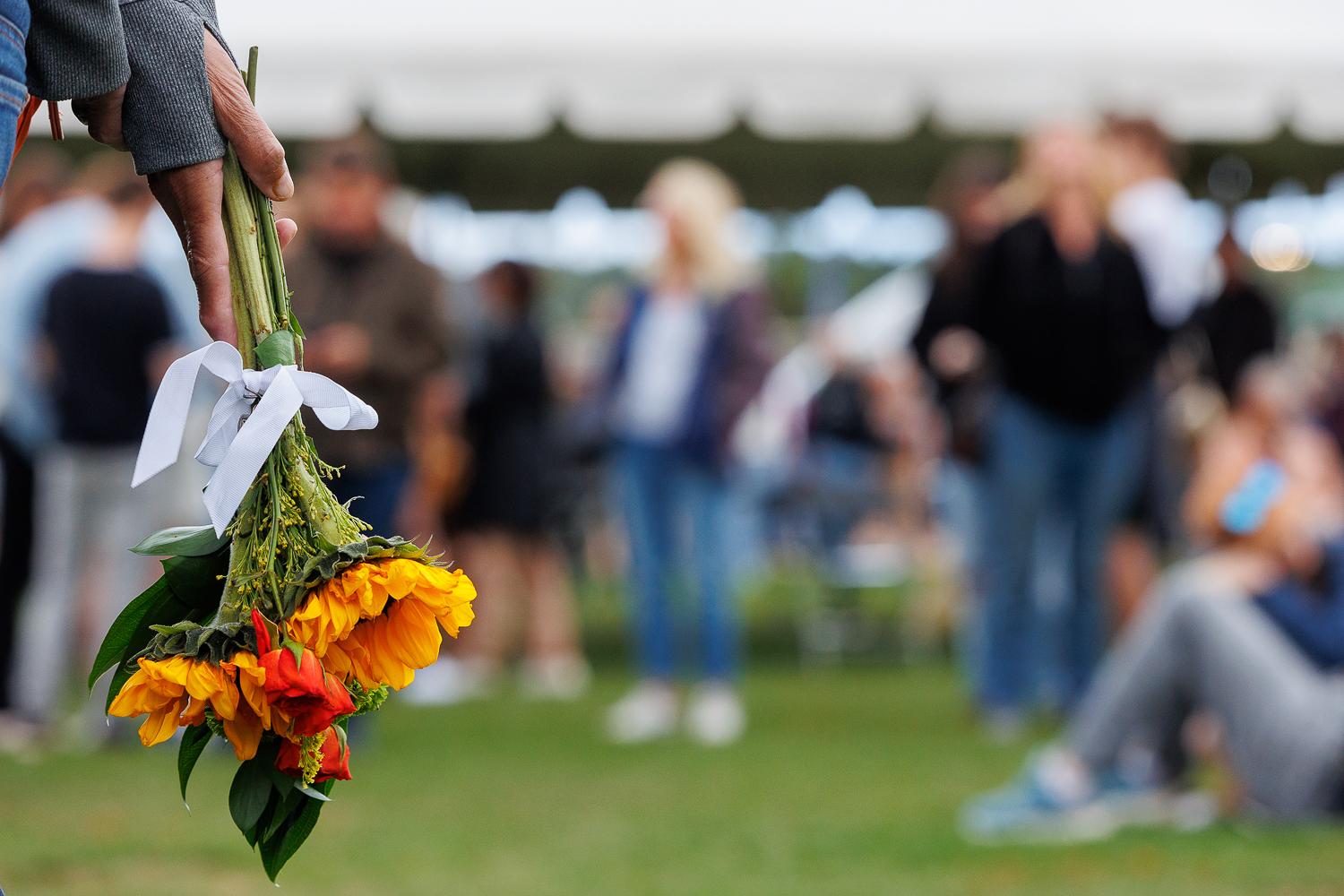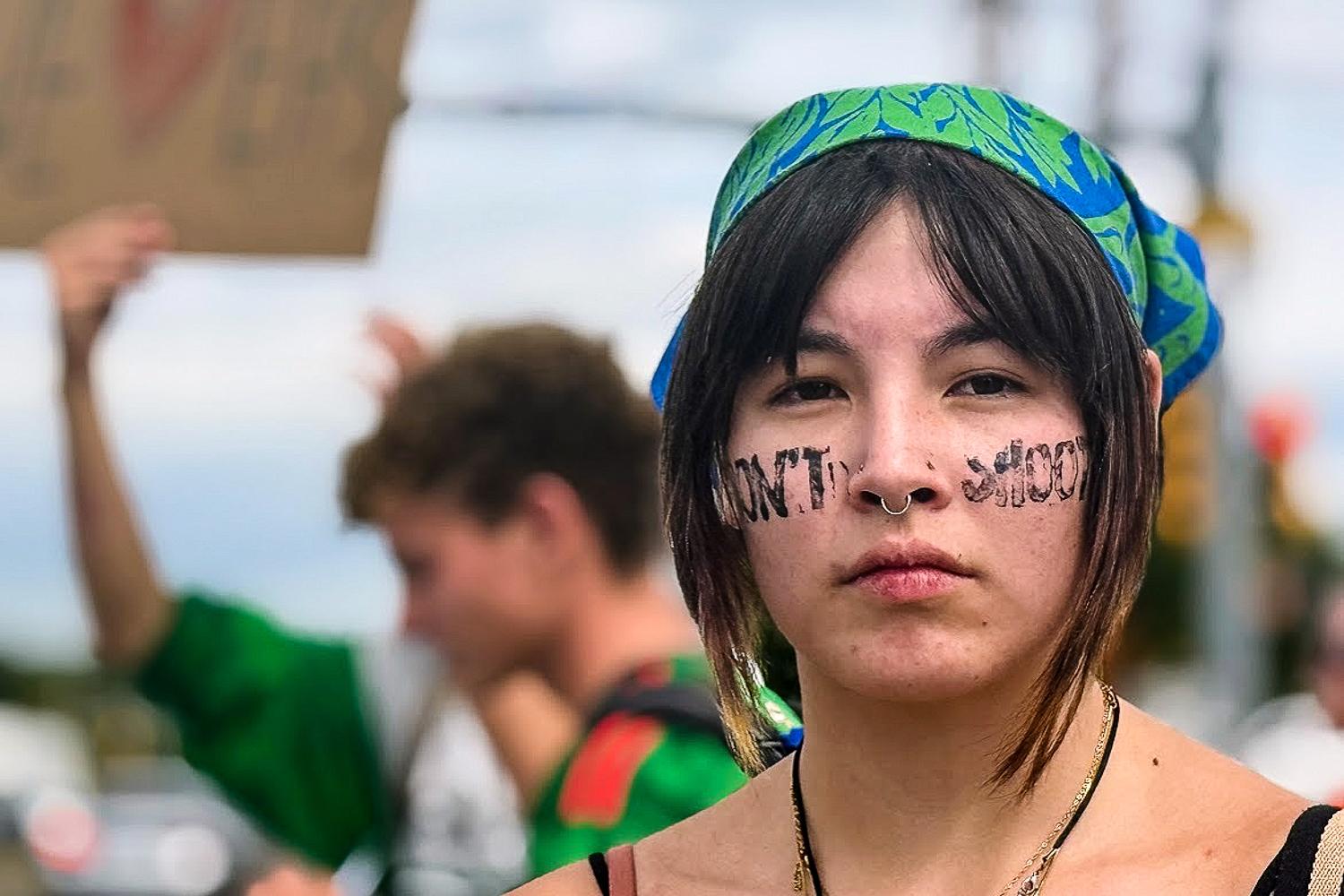

George Rivera is facing the age old traveler’s dilemma. He’s about to board a flight and his suitcase needs to fit in the overhead compartment — with 117 pieces of art gently stuffed in there.
“I’ve checked in bags and boxes that have been lost before, so I’ve lost art,” Rivera said. “I learned from that.”
The University of Colorado Boulder art professor is taking this art the carry-on route for an art show at the DMZ Museum in South Korea, just miles from the North Korean border. Rivera has traveled the world, organizing hundreds of art exhibitions in regions experiencing conflict or human rights issues, through Artnauts, an artist collective he founded in 1996.
The recent Pyeongchang Olympics as well as news about nuclear tensions between the U.S. and North Korea, made him want to bring a show to the Korean Peninsula. For this show, Rivera asked artists to create works about “liminal space,” which is the space between two thresholds. “And in this case, we’re talking about between North Korea and South Korea,” he said.
All of the artists made diptychs, pairs of works meant to be hung side by side, but with space in between them, at the DMZ Museum. The artists had different interpretations of this theme. Rivera’s co-curator on this exhibit, assistant professor of painting and drawing at the University of South Florida, Joo Yeon Woo, looked at how space between the north and south has divided families. She used old photographs of her grandfather and grandmother.

Artist Rachel Delaney, an associate professor at Metropolitan State University of Denver, created a mixed media diptych that incorporates fabric. The red stitches running across one half of it represent the Demilitarized Zone. The other has a red crowned crane, an endangered bird that has been able to thrive in the DMZ. The area has become an accidental natural reserve because it’s been closed off to development.

Interview Highlights With George Rivera
On the Artnauts artist collective:
“The aim of the Artnauts is to address the major issues of our time and to focus on social issues that exist around the world, that are particular to a country and yet resonate way beyond that country. And to use that as a vehicle for us to have a dialogue and think about what’s going on in our time.”
On getting this exhibit into the DMZ Museum:
“My co-curator on this exhibition, Joo Yeon Woo, is Korean-American. Her family lives in Korea. I needed her as a co-curator because she helped get the place for us and knows the language. It was her contacts and her efforts that allowed us to get into the DMZ Museum… I did not [sense any hesitancy on the museum’s part]. I thought I would because there have been [past Artnauts exhibitions] where material was censored or they feel that certain works cannot be brought in.”
On a previous exhibition he felt really had an impact:
“One of the ones that is memorable to me is a show that we did in Columbia, in the Amazon Rainforest. We [took] the exhibition to 15 places throughout the Amazon region, including along the Amazon River, [where there were] tribal groups. You can’t drive there, it’s all by boat or plane it’s that isolated. Anytime you bring art to a new audience, you’re making an impact on the society. Here, we had tribal groups who had never seen contemporary art. They even experienced it differently. Instead of just looking at the art, they wanted to touch it because that’s the way they experience their environment.”
The Artnauts show “Liminal Space” will be at the DMZ Museum in South Korea June 22 - Dec. 22, 2018.









